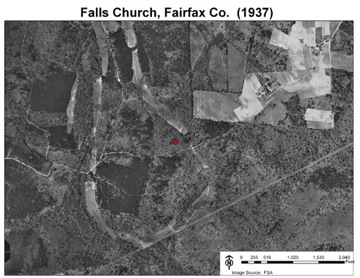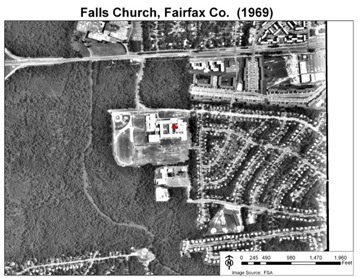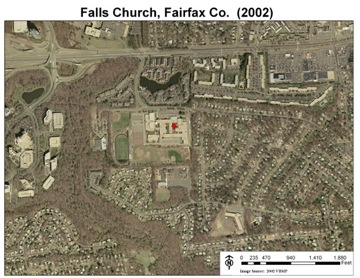 |
February 2010
|
February 2010 // Volume 48 // Number 1 // Tools of the Trade // v48-1tt5
The Sky's the Limit: Integrating Geospatial Tools with Pre-College Youth Education
Abstract
Geospatial tools, which include global positioning systems (GPS), geographic information systems (GIS), and remote sensing, are increasingly driving a variety of applications. Local governments and private industry are embracing these tools, and the public is beginning to demand geospatial services. The U.S. Department of Labor (DOL) reported that the pool of geospatial professionals is unable keep up with demand. It is important that pre-college educators begin implementing these tools in the classroom to stimulate the educational pipeline. Twenty-four teachers from Fairfax, Virginia were involved in an educational approach that integrates GIS with civic and environmental education.
Introduction
Geospatial tools, which include the use of Global Positioning Systems (GPS), geographic information systems (GIS) and remote sensing, are permeating almost every facet of society (Tomlinson, 2003; Gewin, 2004). These mapping and analysis tools were once confined to specialists and researchers. However, continued strong employment demand for a geospatial literate workforce, free software applications, and user-friendly Internet mapping services (including GoogleEarth and VirtualEarth) continue to fuel the public's acceptance and appetite for geospatial services (Butler, 2006; Marble, 2006).
In 2003, the U.S. Department of Labor (DOL) maintained that the geospatial industry (along with nanotechnology and biotechnology) was one of the three fastest emerging fields (Gewin, 2004). Furthermore, through a survey (n = 274), Settlage, Odom, and Pedersen (2004) identified a GIS knowledge gap between the desired knowledge levels of science teachers and their existing knowledge levels. Pre-college geospatial awareness and education are vital to support the higher educational pipeline that will ultimately fuel an array of applications and industry sectors, including natural resource management, agriculture, economic development, planning, engineering, transportation, tourism, public safety, and health. Mila (2005) provided examples of several geospatial application areas.
The National Geospatial Extension Program, in conjunction with the Virginia Tech Department of Forestry, has been working with pre-college educators to facilitate youth awareness and education in geospatial fields. This article outlines an initiative of the Virginia Geospatial Extension Program that provides teachers with the basic skill sets to integrate GIS-based instruction in their classrooms and apply these techniques to support environmental inquiry and exploration.
Linking Land Use and Land Cover Change with Water Quality
In the spring of 2007, 25 middle and high school educators participated in a pre-college teacher-training workshop. Through this project, teachers were provided historical aerial photographs that provided visual evidence of "landscape amnesia," which is a term that refers to a gradual shift in natural resource baselines (Diamond, 2005). One consequence of landscape amnesia is that younger generations do not realize how their communities looked just a generation ago, as the natural and cultural landscapes have been incrementally altered. The workshop series in Fairfax County, Virginia provided teachers with a buffet of teaching options to help their students to identify changes in their landscapes over time.
Teachers were provided with digital aerial photography (rectified aerial photographs) from 1937, 1969, and 2002 of their schools and communities (Figures 1-3). In Fairfax County alone, aerial photographs of 23 middle and high schools were acquired and digitized. Step-by-step instructions were provided to support the teachers' efforts to integrate the exercise within a GIS environment.
Figure 1.
The Future Location of Falls
Church High School in 1937 (The Red Asterisk Serves as a Common
Reference Point in Figures 1-3.)

Figure 2.
Falls Church High School (1969)
and the Surrounding Neighborhood

Figure 3.
Falls Church High School (2002)
and the Surrounding Neighborhood

These computer-based mapping and analysis tools enabled teachers to superimpose images over each other, pan, zoom-in/out, and develop accurate assessments of land cover change in their communities over time. Using the Project Learning Tree activity Mapping Your Community Through Time, teachers identified potential impacts associated with changes in their school communities. Equally important, they identified how changes in local landscapes can have regional consequences, by potentially affecting communities located downstream, including, in this example, the Chesapeake Bay. Teachers were instructed to integrate visual and statistical analysis using the data that they had been provided.
Through the workshops, teachers were also provided with instruction on other geographic exploration, or visualization systems, including GoogleEarth and USAPhotoMaps. Using these software tools, teachers were led through an exercise called Surf Your Watershed, in which they traced community waterways upstream to their source and downstream to their terminus (the Chesapeake Bay).
In addition to being provided with this exercise in a digital format, teachers were also provided with pdf's and printed maps of their school communities spanning three time periods (1937, 1969, & 2002). Teachers were then asked to estimate the different types of land cover for each year using a transparency with a random dot matrix. This is a low-tech but extremely effective approach that can be implemented in the classroom to identify and estimate changes in community land cover. This approach was developed for educators who felt that they are technically challenged.
Impacts
The workshop provided an opportunity for educators to learn about their local community and connect science-based discussions to social studies and technology. The Fairfax County teacher workshops were provided by a grant through the NOAA B-Wet program and were administered in partnership with Virginia Department of Forestry, Virginia Cooperative Extension, Fairfax County Public School System, and Project Learning Tree. This workshop format has been used successfully in other communities across Virginia as well, including the Shenandoah Valley, Hampton, Virginia Beach, and Portsmouth. Selected impacts from these workshops include the following.
- More than 80 educators received direct training, and many have shared resources with at least two of their peers.
- Thirty examples of different watershed education programs were developed and shared by teachers across the state as a result of these workshops.
- More than 20,000 tree seedlings were planted by students, placing an emphasis on improving riparian and residential areas.
Summary
Providing geospatial training to pre-college educators requires more than just a software demonstration. Teachers must be able to apply geospatial tools in the classroom in a manner that encourages students to explore, interact, inquire, generate hypotheses, and become involved in discussions. In addition, geospatial tools should be implemented to help students better understand the potential impacts of incremental and subtle changes in their communities. By understanding the evolution of their neighborhoods and communities and the impacts associated with these changes, students can take simple actions to help mitigate these impacts, such as planting tree seedlings.
Acknowledgements
The authors would like to acknowledge the following individuals and organizations for their contributions: the NOAA Chesapeake Bay Office; Myra Thayer, K-12 Science Coordinator with Fairfax County, Virginia; Al Stenstrup, the Director of Director of Curriculum for Project Learning Tree (PLT); and Lisa Deaton, the PLT State Coordinator for Virginia.
References
Butler, D. (2006). The web wide world. Nature. 439: 776-778.
Diamond, J. (2004). Collapse: How societies choose to fail or succeed. Viking Press, New York.
Gewin, V. (2004). Mapping opportunities. Nature. 427: 376-377.
Malone, L., Palmer, A. M., and Voigt, C. L. (2003). Mapping our world: GIS lessons for educators. ESRI Press, Redlands, CA.
Marble, D. (2006) Defining the components of the geospatial workforce—Who are we? ESRI ARC News, 27(4). Retrieved February 20, 2009 from: http://www.esri.com/arcnews/Winter06articles/winter06gif.htm
Milla, K., Lorenzon, A., & Brown, C. (2005). GIS, GPS, and remote sensing technologies in Extension Services: Where to start, what to know. Journal of Extension [On-lne], 43(3) Article 3FEA6. Available at: http://www.joe.org/joe/2005june/a6.shtml
Project Learning Tree. (2006). Mapping your community through time. In Exploring environmental issues: Places we live. American Forest Foundation. 49-68.
Settlage, J., Odom, A. L., & Pedersen, J. E. (2004). Uses of technology by science education professors: Comparisons with teachers' uses and the current versus desired technology knowledge gap. Contemporary Issues in Technology and Teacher Education. 4(3), 299-312.
Tomlinson, R. (2003). Thinking about GIS: Geographic Information System planning for managers. ESRI Press, Redlands, CA.




